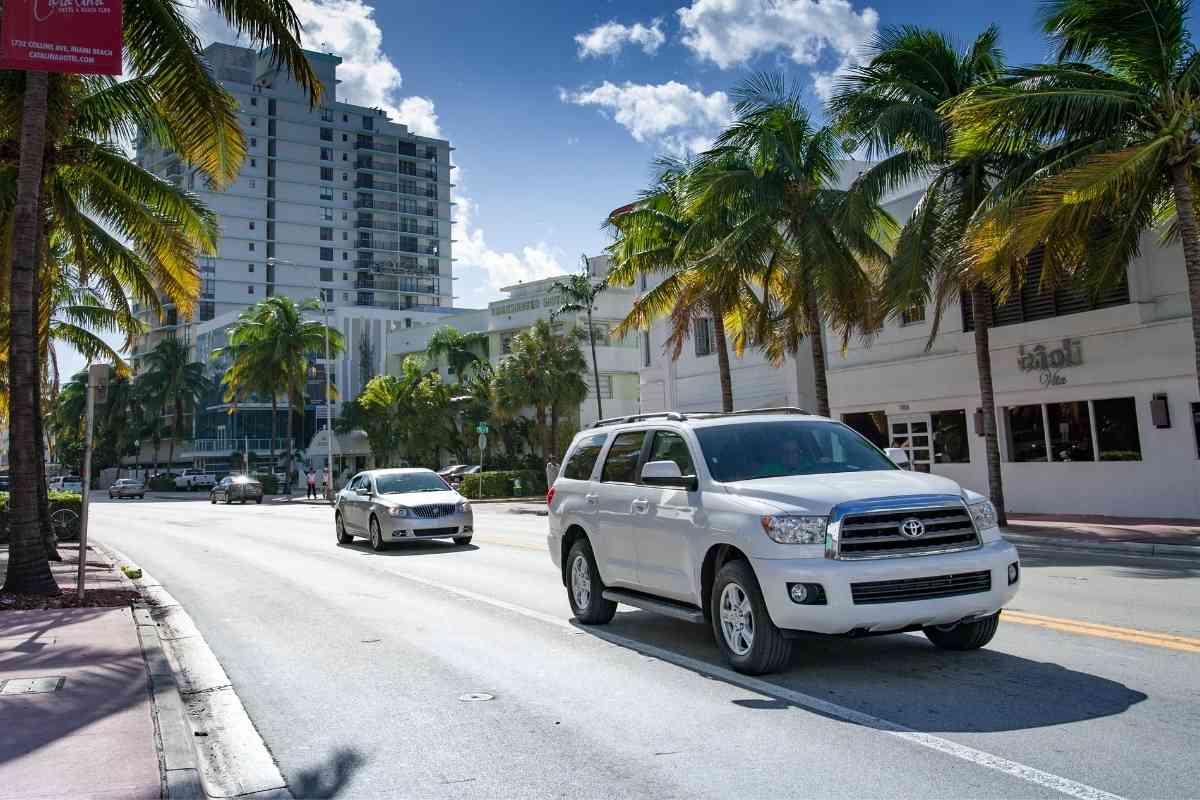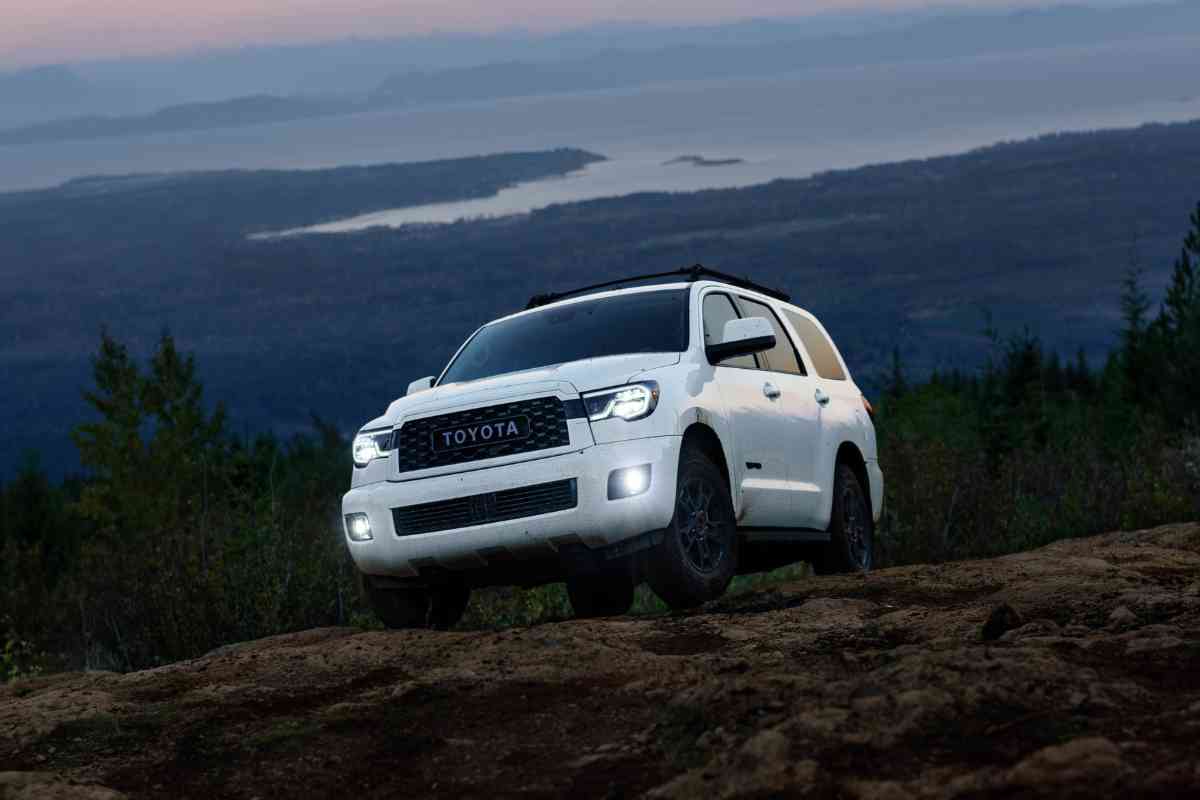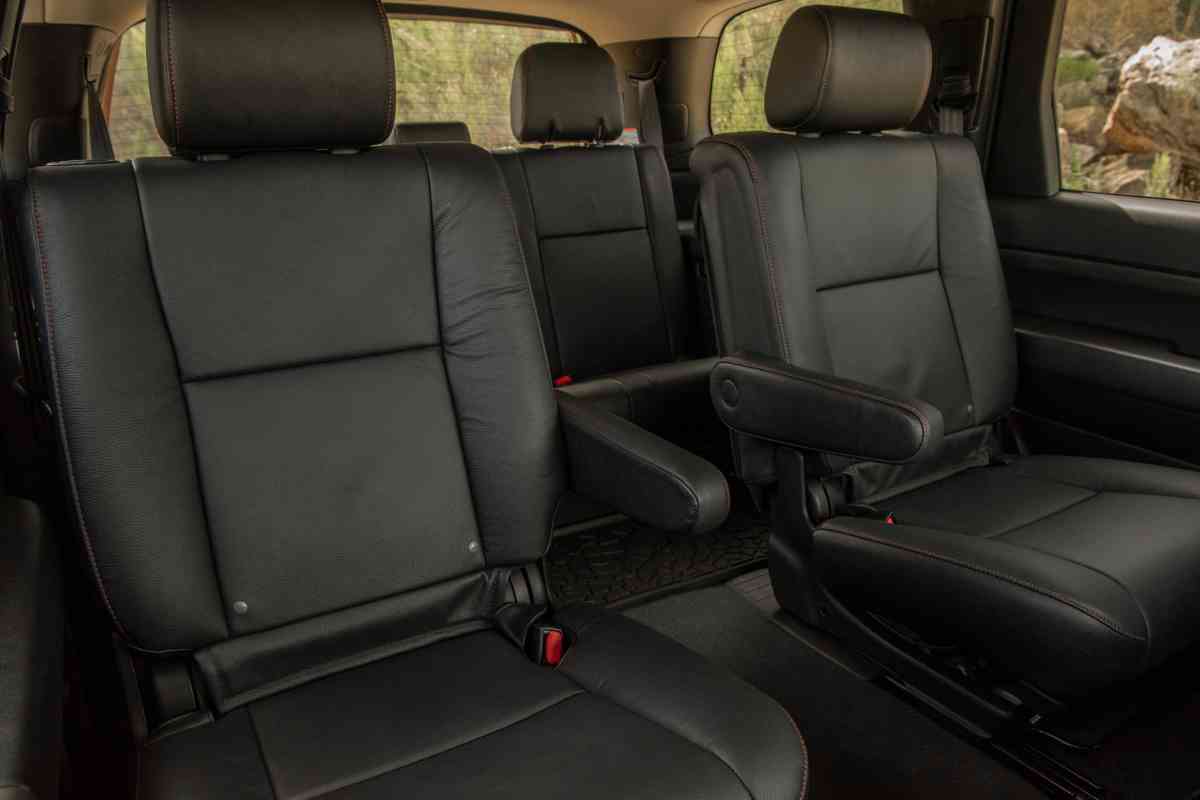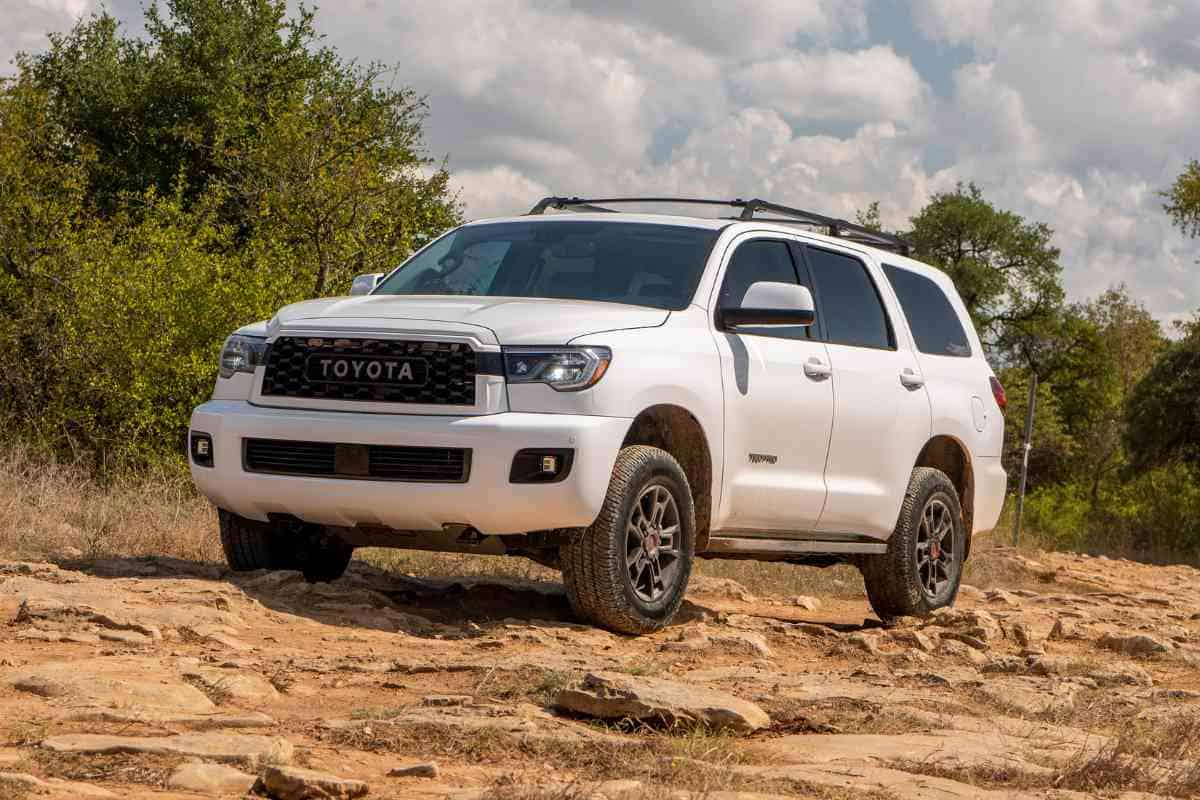The 6 Worst Toyota Sequoia Years To Avoid (& Why!)
You are considering the purchase of a Toyota Sequoia, but you want to be sure you don’t get stuck with a lemon. So, a bit of valuable information is knowing the Toyota Sequoia years to avoid.
Our article dives deep into one of our favorite SUVs ever. Here are the six worst years for the Toyota Sequoia and why!
What are the Toyota Sequoia years to avoid? The short answer is that the first generation is usually the worst one.

“Drive Past Myths: Get the Real Deal on Car Buying!”
🚘 Uncover 13 Car Buying Misconceptions with Our FREE Newsletter!
Plus you will get our quick tips, expert advice, and myth-busting insights delivered straight to your inbox.
Subscribe now and make informed decisions without the detours.
“Experts Hate This! Learn the Car Buying Secrets They Don’t Want You to Know. Free Subscription!”

The worst years for the Toyota Sequoia are the early model years, 2001 – 2008. The issues included transmission failure, cracked exhaust manifolds, VSC module, and ABS brake failure.
The early problems owners encountered frustrated consumers and almost cost Toyota its place as a premier automaker.
Toyota has a reputation for quality and reliability. The company has had the top-selling SUV in the Rav4, and many consumers with larger families love the full-size Sequoia.
While recent years have cemented Toyota’s place as a builder of excellent cars, trucks, and SUVs, the early years of the Sequoia left a great deal to be desired.
Chronic problems and safety issues shook the company to the core and almost dethroned them from the top of the market.
What Are The Worst Toyota Sequoia Years To Avoid? (2001 – 2008)

When the Toyota Sequoia came onto the SUV scene in 2001, the Japanese car company intended to capture the full-sized SUV North American market.
With the success of the Chevy Suburban and GMC Yukon, which drew consumers’ attention in the early 2000s, Toyota needed a vehicle that would eat into the sales of American automakers, just as it had done with the Camry so successfully a few years earlier.
Their answer was the Toyota Sequoia (whose name just sounds large), but instead of patiently building an excellent SUV, the company rushed the vehicle into production. The result was a significant family mover that was fraught with problems.
It took nearly four years for the company to build an SUV that wasn’t crap and another four years of tweaking to get it right finally.
The consensus is that any model before 2009 isn’t worth buying, no matter the price.
What were the Major Problems of the Early Models of Sequoias?
The first few years of the Toyota Sequoia had significant engine, transmission, and safety issues.
Transmission Problems
The 2002 model year was known for severe transmission failures. Issues with the transmission were the most common problems with this year.
Many customers found their Toyota Sequoias failing to shift into gear, shaking or lurching while on the road, and having their instrument panels light up with multiple DTCs (diagnostic trouble codes).
Unfortunately, the repair was never cheap, relieving customers’ wallets to a few thousand dollars each time.
The constant rub was that the transmission failures often occurred to vehicles with close to 100,000 miles, making them not repairable under the manufacturer’s warranty.
VSC Engages Without Driver Input
Imagine driving down the Interstate when suddenly your large SUV steers to the right, grind the brakes and shake your teeth loose as multiple warning bells and lights are dancing on your display.
This problem is the scenario that happened to numerous Sequoia owners, particularly those driving the 2001 model.
The VSC is an excellent tool for inclement weather to guard against tires losing traction, but if it engages when it isn’t supposed to, it can create an accident and cause serious injury.
Toyota issued five recalls during the first four years of Sequoia’s existence for the issue, insisting that the issue was due to faulty software.
Many owners have had luck with replacing the wheel speed sensors or the anti-lock brake fuse, but the best way to avoid the issue is simply not to purchase the SUV in the first place.

Lower Ball Join Failure
The lower ball joint can affect steering and suspension and create huge concerns for Sequoia owners.
In 2010, Toyota issued a recall for the first eight years the model was in production, but by this time, most owners had already replaced their ball joints, and the recall didn’t reimburse them for expenses already spent.
Brake Problems
The trouble with early model Sequoias was that sometimes they wouldn’t go because of transmission problems, and sometimes they had trouble stopping due to braking issues.
When the customer SUVs reached close to 100 k miles, the diagnosis was warped rotors.
While some customers encountered the shaking much earlier (some as early as 5,000 miles), there was still a lot of confusion.
Toyota issued a couple of recalls, but as usual, they were late to the party. If you own an early-year Sequoia, you have already replaced the rotors several times.
Cracked Exhaust Manifolds
When you are about to drive your family in an SUV on a trip, the last thing you want is for the vehicle to start making a loud ticking sound, but that is precisely what many early model Sequoias (2001 – 04) did.
The problem was a cracked exhaust manifold, which in fairness, affected almost every Toyota V8.
The problem was diagnosed as a thin tubing that simply could not handle the intense exhaust heat that the large V8 produced. The stress of the gases, combined with the heat, caused cracking to develop, primarily on the driver’s side.
Unfortunately, the crack could grow if left unchecked, allowing carbon monoxide gases to enter the cabin. While there are no reports of deaths caused by the issue, this created considerable concerns for Toyota owners.
The cost of replacing an exhaust manifold ranged from $2000 – $2500, depending on the dealership.
What are the Best Years for the Toyota Sequoia?
For the 2010 model year, Toyota replaced the V8 engine it had used for the 1UR-FE. It had been successful in foreign markets in Lexus models.
Over the years, the change of engines and modifications helped Toyota emerge as one of the best makers of large luxury SUVs worldwide. It has fewer complaints than previous Toyota Sequoia models. For more information about the Sequoia, see the article on fourwheeltrends.com.
We recommend any Toyota Sequoia from 2010 onward. Some model years are better than others (the best model years are 2015 – 18), but the models Toyota has been producing recently demonstrate that Toyota is committed to making a quality product.
According to a study in 2019, the Sequoia was one of two SUVs that was voted most likely to last over 200,000 miles.
For the 2023 model year, Toyota has launched the third generation of Sequoia with a new facelift, design, and engine. The reviews for the newest model have been very positive and encouraging to Toyota buyers.

Key Takeaways Of The Worst Years For the Toyota Sequoia
- The Toyota Sequoia years to avoid are 2001 – 2008 model years
- The worst years of Sequoia were 2001 – 2004, with numerous problems reported.
- The best years of Sequoia are 2015 – 2018.
- Braking problems, lower ball joints, transmission issues, and cracked exhaust manifolds were issues.
- Many of the repairs were not eligible for recalls or warranty work and repair costs for the consumer were sizable.
